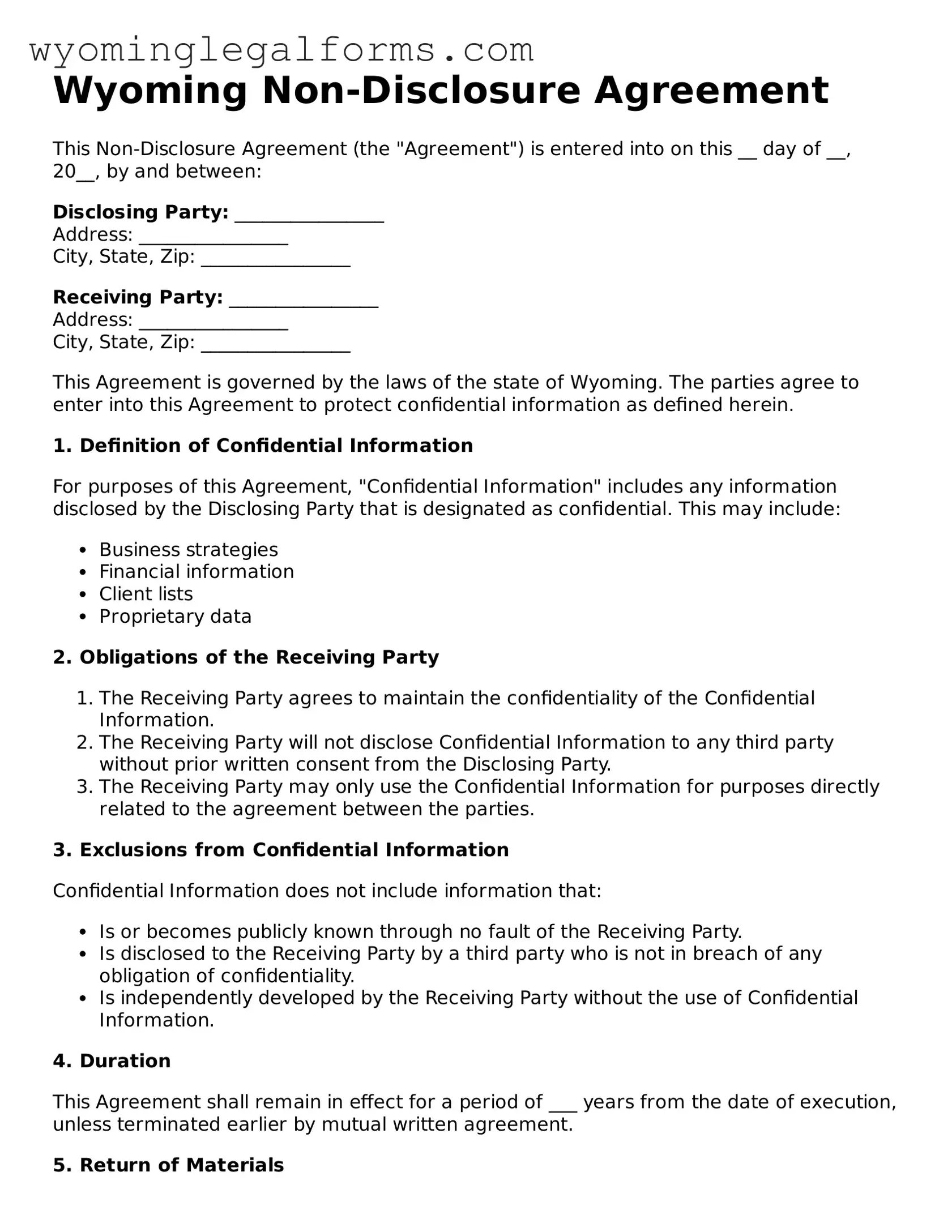What is a Wyoming Non-disclosure Agreement (NDA)?
A Wyoming Non-disclosure Agreement is a legal contract designed to protect confidential information shared between parties. It establishes a formal understanding that certain information will not be disclosed to unauthorized individuals or entities. This agreement is often used in business settings, where sensitive data such as trade secrets, financial information, or proprietary processes are involved.
Who typically uses a Wyoming NDA?
Individuals and businesses frequently utilize a Wyoming NDA. Startups may require it when discussing ideas with potential investors. Employers often ask employees to sign NDAs to safeguard company secrets. Additionally, contractors and vendors may need to sign an NDA to protect the interests of the hiring company when they access sensitive information.
What information can be protected under a Wyoming NDA?
Any information that is deemed confidential can be protected under a Wyoming NDA. This may include business plans, customer lists, marketing strategies, technical data, and financial records. It is crucial that the information is clearly defined within the agreement to ensure adequate protection.
How long does the confidentiality obligation last?
The duration of the confidentiality obligation can vary based on the terms outlined in the NDA. Typically, it lasts for a specified period, which can range from a few years to indefinitely, depending on the nature of the information. It is essential to clearly state this duration in the agreement to avoid any ambiguity.
What happens if someone breaches the NDA?
If a party breaches the NDA, the injured party may seek legal remedies. This could include monetary damages or injunctive relief, which is a court order to stop the breaching party from disclosing the confidential information. The specific consequences should be detailed in the agreement to provide clarity on enforcement measures.
Is it necessary to have a lawyer review the Wyoming NDA?
While it is not mandatory, having a lawyer review the NDA is highly recommended. A legal expert can ensure that the agreement is comprehensive, enforceable, and tailored to the specific needs of the parties involved. This can help prevent potential legal issues down the line.
Can an NDA be modified after it has been signed?
Yes, an NDA can be modified after it has been signed, but both parties must agree to the changes. Modifications should be documented in writing and signed by all parties to ensure clarity and enforceability. Verbal agreements regarding changes may not hold up in a legal context.
Are there any limitations on what can be included in a Wyoming NDA?
Yes, there are limitations. An NDA cannot protect information that is already public knowledge or information that was independently developed by the receiving party without the use of the confidential information. Additionally, the agreement must comply with state and federal laws to be enforceable.
How can I create a Wyoming Non-disclosure Agreement?
Creating a Wyoming NDA can be done through various means. Many templates are available online that can be customized to fit specific needs. Alternatively, consulting with a legal professional can provide a tailored agreement that meets all legal requirements and adequately protects the interests of the parties involved.
